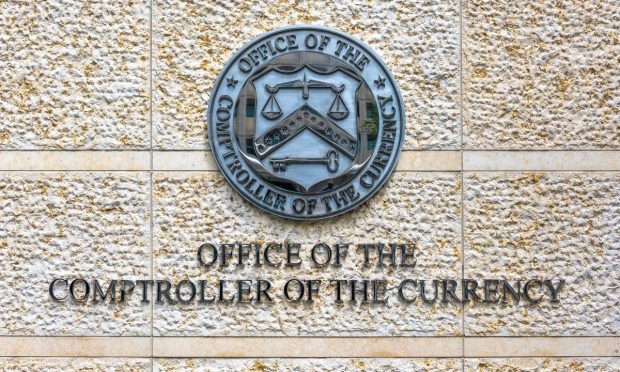OCC’s Comptroller Wants Stablecoins to Be Interoperable With US CBDC

In a speech delivered on April 8, 2022 at Georgetown University, Michael Hsu, Acting Comptroller of the Office of the Comptroller of the Currency (OCC), expressed his views on the ideal architecture of stablecoins. This speech marked the end of a week where most public institutions that oversee financial markets in the U.S. took a stance on crypto assets.
Since President Joe Biden issued an executive order last month requesting federal agencies to gather information on cryptocurrencies and how to regulate this industry, more institutions are expressing their views on different policy matters. Last week, on April 4, the Securities and Exchange Commission (SEC) stated that it plans to increase its oversight of the crypto industry, most notably, over centralized and decentralized exchanges. SEC chairman Gary Gensler also ordered his agency to collaborate with the Commodity Futures Trading Commission (CFTC), which the SEC has been at odds with for the past six months over whether cryptocurrencies are securities or commodities.
Also on Thursday, April 7, Treasury Secretary Jane Yellen delivered a speech hailing the potential of crypto and suggesting that regulation must keep up with innovation rather than pull it back or be dragged along. Perhaps in a less mediatic move, yet equally relevant, the Federal Deposit Insurance Corporation (FDIC) released a letter requesting all the institutions it supervises to notify if they are engaged or intent to engage in any activity involving or related to crypto assets.
Last, OCC’s Michael Hsu focused on stablecoins. He said that the agency cannot ignore the rapid growth of the industry, but he expressed some doubts about whether Web3 and a blockchain-based digital economy are inevitable. “Several observers have made thoughtful and credible arguments questioning the value proposition and long-term sustainability of cryptocurrencies and Web3. I find many of their arguments to be compelling,” said Mr. Hsu.
Nonetheless, he suggested how the architecture of a USD stablecoin system should look and he mentioned three key policy issues that affect this design: stability, interoperability, and separability.
With regards to stability, there are two options to mitigate risks and promote stability: a money market fund approach or a banking approach. The first is grounded in disclosure and high-level requirements regarding asset holdings. The second is based on bank regulation and supervision, grounded in prudential standards to protect consumers.
The OCC seems to lean towards a banking approach but with a narrower, tailored set of bank regulatory and supervisory requirements so as to not put an undue burden on stablecoin issuers.
The second policy issue, interoperability, is of utmost importance for the OCC. Most of the largest stablecoins exist on multiple blockchains like Ethereum, Solana, Tron, Algorand, etc. — and these are not interoperable. This means that even the same stablecoin issued by the same company, USDT on Ethereum and USDT on Tron blockchain, are not fully interoperable across blockchains. The same lack of interoperability occurs across stablecoins. In today’s crypto ecosystem, stablecoins are not interoperable with each other or with the dollar.
“Without interoperability amongst USD-based stablecoins, the risk of digital ecosystems being fragmented and exclusive (with walled gardens) is heightened,” said Mr. Hsu. Notably, this interoperability is also desirable for the OCC in the long run should a USD Central Bank Digital Currency ever be issued. This would “facilitate broader use of the dollar instead of a particular corporate-backed stablecoin, as the base currency for trade and finance in a blockchain-based digital future.”
Last, the OCC is concerned with “intraday liquidity risk” for banks. Blockchain-based money holds the promise of being “always on,” irreversible, programmable and settling in real time. These benefits may also bring risks. One example the OCC cites is a bank that engages in both traditional payments and blockchain-based payments. The accumulation of blockchain-based payments over, say, a weekend could outstrip a bank’s available liquidity resources.
One possible solution would be to require that crypto activities be conducted in a standalone bank entity, separate from any other insured depositary institution subsidiary and other regulated affiliates.
Mr. Hsu’s speech didn’t include any policy initiatives, but it highlighted the level of engagement and collaboration with other agencies, including state banking supervisors.
Read more: Yellen Hails Crypto’s ‘Transformative’ Potential, Urges Cautious Approach
